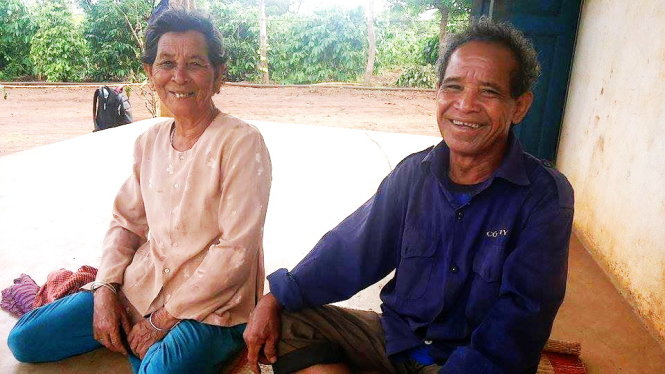Villages of Vietnamese people were set up in Ratanakiri Province of Cambodia in the 1960s, and Cambodian villages were built in Vietnam for people to flee from the Pol Pot regime the following decade.
Despite living in two different nations, they are considered neighbors and owe each other a debt of gratitude for extending help when one faced misfortune.
In Ia Pnon Commune, Duc Co District, Gia Lai Province in the Central Highlands region of Vietnam, which borders Cambodia to the west, there are two villages whose residents are mostly people of Cambodian origin.
They are often called ‘Cam villages,’ whose residents lived through a painful period during the rule of the former Pol Pot regime in the 1970s.
To flee from the massacres under Pol Pot, the entire population of the two villages cut through forests in Cambodia toward the border with Vietnam, and they all were saved and supported by Vietnamese people.
They decided to select Vietnam as their new homeland to settle down.
Not only did they save the Cambodians but Vietnamese soldiers and people also volunteered to act as ‘live shields’ to protect their neighbors in distress.
Ro Mah Kluch, Party Secretary of Ia Pnon Commune, recalled that from the beginning of 1976, hundreds of Cambodians carrying clothes, daily home tools and cattle rushed toward Vietnam in panic.
Kluch said he was 15 years old then.
“The Cambodians said Pol Pot soldiers had raided nearby villages and killed both adults and children by cutting their throats,” he recollected.
“No one survived, so residents of Triel Village in Ia Tung Commune and Lam Village in Ponhay Commune of Ou Ya Dav District in the Cambodian province of Ratanakiri fled toward Vietnam.”
Ro Cham Luynh, 73, an official in Ia Pnon at that time, said the Cambodian neighbors had almost nothing but great fear on their faces and in their words.
The Gia Rai ethnic minority people living in Gia Lai were mobilized to receive the Cambodians.
“We consider each other brothers and no separation has ever existed,” Luynh said.
“Our neighbors were in danger and we helped them. That’s all!
“Those who had rice gave rice. Those who had shelter provided shelter.”

Ksor Rnhang (R), the patriarch of Triel Village. Photo: Tuoi Tre
Vietnamese soldiers led civilians to help the victims settle and farm.
Both Vietnamese and Cambodian people in Ia Pnon faced economic difficulties during wartime, but they all lived and helped one another to overcome the challenges.
During their first days in Vietnam, the Cambodians were exhausted after spending a long time in forests, and the Gia Rai cooked chicken rice soup for them to survive, Luynh recounted.
The Cambodians sometimes recalled the events and the help they received in Vietnam.
Later, they were given land and seeds for cultivation to build their own life.
But that was not all. Pol Pot soldiers heard of their escape to Vietnam and deployed troops to cross the Vietnamese border to look for the refugees from 1976 to 1978.
Vietnamese soldiers convened a meeting and asked the Cambodians to move some 10 kilometers away from the border to avoid the hunt.
The soldiers and local people were deployed to the border of the area to set up a live shelter to protect the Cambodians and fight against Pol Pot.
When Pol Pot troops were wiped out and peace was restored in 1980, no one wished to return to Cambodia, instead the villagers decided to settle in Vietnam. They use the same names of their original villages – Triel and Lam – but on new land in Vietnam.
People living along the border between Vietnam and Cambodia have long considered one another brothers and neighbors thanks to the help they have exchanged, said Ksor Rnhang, the patriarch of Triel Village.
They often visit one another during traditional parties and holidays.
“Vietnamese soldiers love us and Vietnamese civilians love and protect us,” Rnhang said. “Without them, we would have all died at the hands of Pol Pot.”
Cambodians have also extended help to their Vietnamese neighbors for a long time.
In the 1960s, residents of many villages in Ia Pnon Commune left the places for Ratanakiri Province in Cambodia to avoid military raids in Vietnam, which was fighting a war at the time.
“Cambodians didn’t regret anything to help their Vietnamese peers,” said Rnhang.
Vietnamese soldiers were given honest help by locals in Ratanakiri in wartime.
Like us on Facebook or follow us on Twitter to get the latest news about Vietnam!



















































